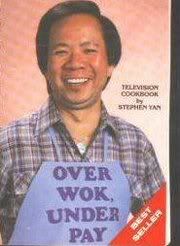Finding Forrester is one of the reasons why I started my career as a teacher. The movie, starring Sean Connery as the elusive and reclusive one-novel-only-Pulitzer-winner author William C. Forrester, was shown here in the country almost three years ago. I remember the almost empty theater and the touching scenes where Forrester had unintentionally taught an African-American male already prejudged by his teachers and peers as got-into-great-school-due-to-basketball-skills.
I recently saw the movie shown in Star Movies, and I couldn’t help but remember that time, when I was facing the inevitable crisis of life called after-graduation: what is next? Although by that time I had thought about a teaching career, I was open to whatever was available to me. In fact, few weeks before graduation, I began applying for whatever jobs that would fit my resume: administrative/executive assistant, junior developer/programmer, even pharmacy assistant. Never in my mind at that time that a teaching job was even a choice.
Immediately after graduation, I was close into being hired as an executive assistant, doomed into a dark warehouse counting inventories and developing an inventory system, all for less than satisfactory salary. Then I got a call from somewhere that I was not expecting to call me. A teaching job, what else.
Upon hearing the offer, that movie immediately flashed on my mind.
I still remember the first time I stepped into the front of a classroom. June 8, a Saturday. It was supposed to be the final interview. Since the boss knew me even before I applied for the teaching position, the interview turned out to be more like saying hello and catch-up on what had gone since we last met. Then he dropped the bomb: “You can start now. In fact, you have a class in 15 minutes.” It took me almost 15 minutes to recover from the aftershock of the bomb. Look. Here I was, looking forward to signing a teaching contract and breezing through a final interview, wearing only a polo shirt and casual slacks. Only to be told to begin teaching, without even knowing what subject I would handle.
Armed with a borrowed whiteboard marker and a hesitant frown, I entered the computer laboratory, where around 25 students were seated. Thinking that I was a new student, they ignored me until they saw me sit in the table before the whiteboard.
As the cliche goes, and the rest is history.
Teaching is a noble job, but it is a conscious job. I mean, you stand in front of several minds – curious, bored, indifferent, excited, eager – and you cannot help but be conscious that you are making an impact on these people. The way you interact with different people crammed in a single classroom will affect these young, impressionable people for a long time.
Forrester comes into mind. He said: “Upon writing your draft, write with the heart. Then, you rewrite using your mind.” The same can be said with teaching. First, impress into them what needs to be learned with the heart. Then, you amplify what you have taught with critical thinking. For, if your heart is not into what you are teaching, you cannot convince these people that you are teaching them what is right. It will show for sure. I saw some people who taught for the money. I saw students greatly disappointed by these teachers.
Teachers are generalized as doomed to be spinsters/bachelors to the end. A dedicated teacher will not see himself free from his/her duties; at the end of the day, the teacher has to prepare for tomorrow. Indifferent teachers could care less.
Yet my teaching career has definitely ended. Did I grew tired of teaching? Yes and no. Yes, because I saw myself stagnating, stuck in a rotten system where money is an endemic be-all and end-all. Yes, because I saw myself becoming more and more alone. Yes, because I knew it was time to move on.
No, because I really love being a teacher. No, because teaching is never tiring; it is the unsatisfaction that comes with frustration that is tiring. Who would not get tired of haggling for supplies without having your teaching affected by lack of markers and pens? No, because I love the on-classroom/off-classroom interaction. No, because I love coaching students/basketball players during intramurals. No, because I’ll miss all of them.
But life has to move on. At the end of the movie, after vindicating the student from the ridicule of the ridiculous professor, Forrester left for Ireland, never to return to New York. And I – after I said goodbye to my students, I face a new journey, with new faces, and with new adventures and new frustrations (but that is another story). But I knew I left them knowing that somehow, I made a difference in their lives, as Forrester made a difference in the life of that student.
****
Finding Forrester is also about writing and literature. When I was in college, literature subjects, together with arts, social sciences, and philosophy, were considered by students as dead subjects, unworthy of serious study, being totally unrelated to the course of study (it was a technical school, after all). This is an unfortunate truth in life, and I believe the malaise that currently affects the indifferent youth is due to that attitude.
Music is currently one of art’s wings that does not suffer from indifferent attitude of the youth. Unfortunately – again – they tend to relate to forms-masquerading-as-music, totally ignoring the base where all music started – classical music.
One joke published in Reader’s Digest perfectly represents the current thinking. When a man invited his friend to a classical concert, he asked his friend if there was something communicated to him by what he had heard. “Yes”, he replied, “it told me, ‘Go to sleep, Mike, go to sleep'”.
And so, I was not surprised that the PICC Plenary Hall was almost half-empty when Maksim started to play the piano last December 16. Maksim, like others before him, are fighting an uphill battle to bring classical music to the common folk. While Maksim played perfectly, the sound of fury reverberated in the almost empty hall, as if showing his frustration with the very lukewarm reception his music was getting from people.
Maksim was known for his fast and furious way of playing the piano. Pianists are known for their grace in playing the piano, therefore boring most people. They cannot appreciate the technicality of piano playing, specially when applied to Maksim’s way of playing that one of the most expressive instruments. By pounding the keys with such furiousness and speed, you’ll have to wonder how he manages to land his fingers at the right keys and produce the right notes. And you will have to wonder where he gets the energy to play with such fury. But he does not lack grace; on slow pieces, he plays with the requisite grace that slow pieces demand, and more. He acts with animation, with wonder. He looks at the sky in awe of the music, with reverence to the piece.
He called the concert a journey to the New World. His attempt to render old pieces in a lighthearted and furious way is the way to the New World, he thinks.
How do we know if a performance is a success? By the number of listeners/spectators in a venue? If so, Maksim’s New World concert is not a qualified success; it can be said it is a dismal failure. But no. It is a success because Maksim played with his heart, following the advice of Forrester. It is a success because he played for an appreciative audience. It is a success because he played despite the unreceptive people. Seeing an almost empty venue can cause the weak of heart to be disheartened. But he played, because he knew the venue is half-full of receptive people. Because he showed the way – his way – to the New World.
***
By now, you should have learned a not-so-secret lesson: if you want to be succesful in whatever you do, put your heart into it. Try to recall your successes in life, and do not be surprised to find out that it were so because you loved what you did.

